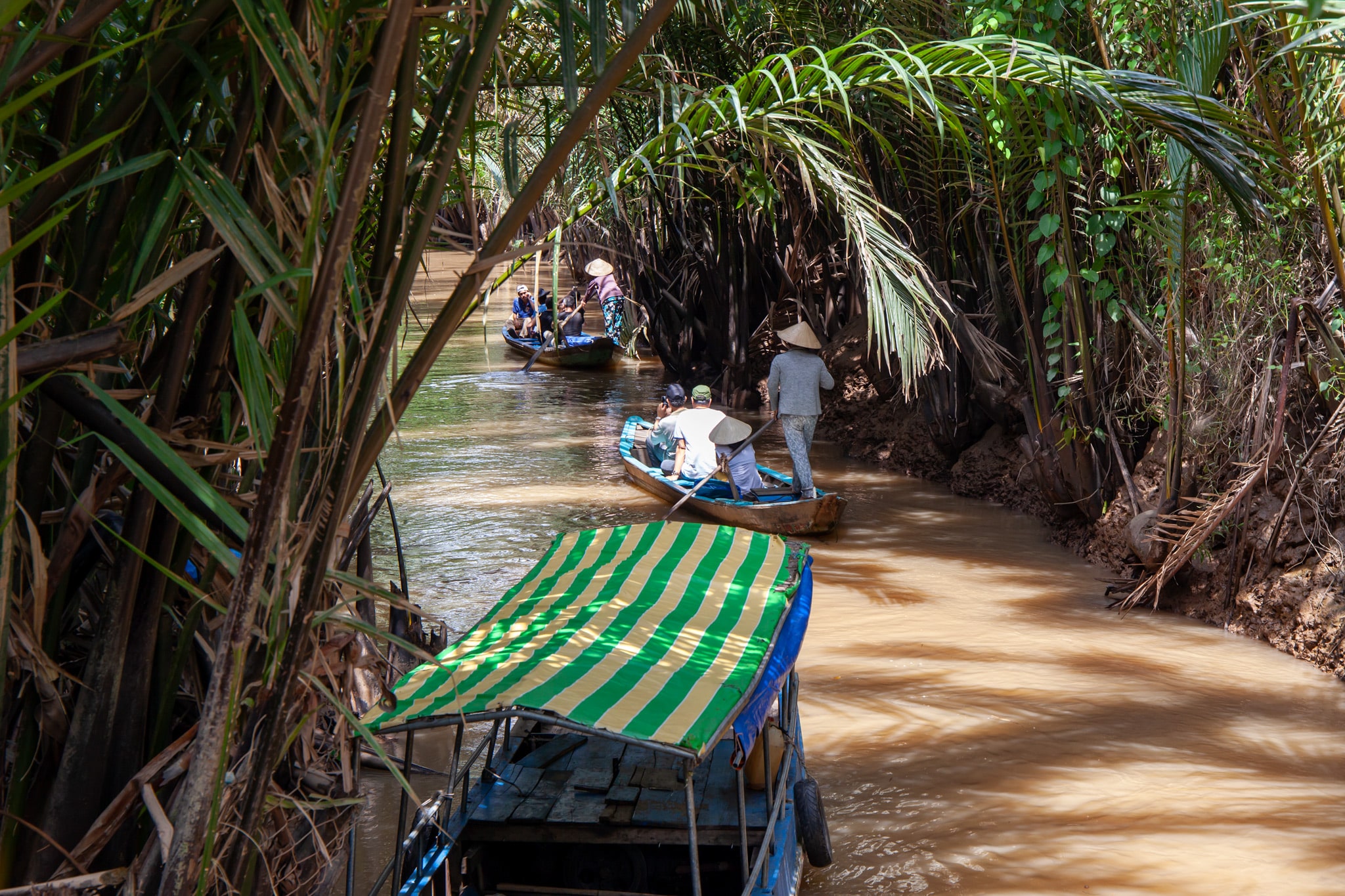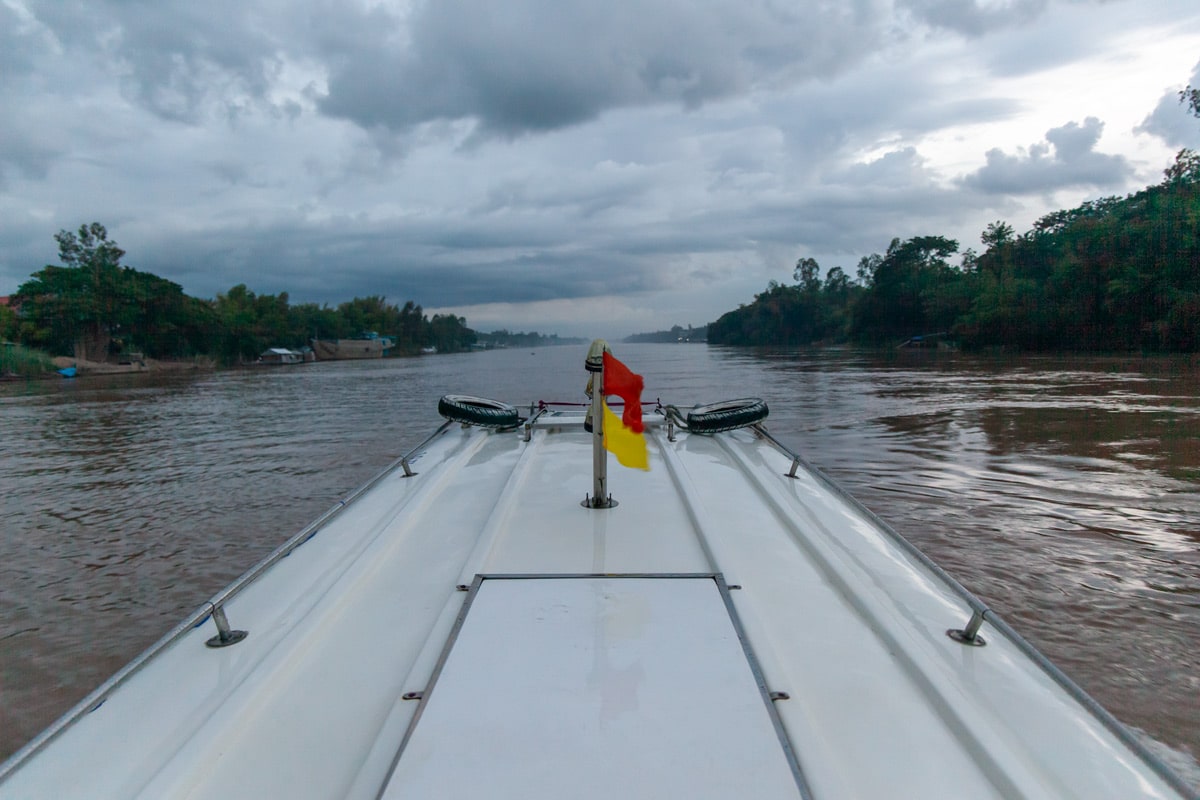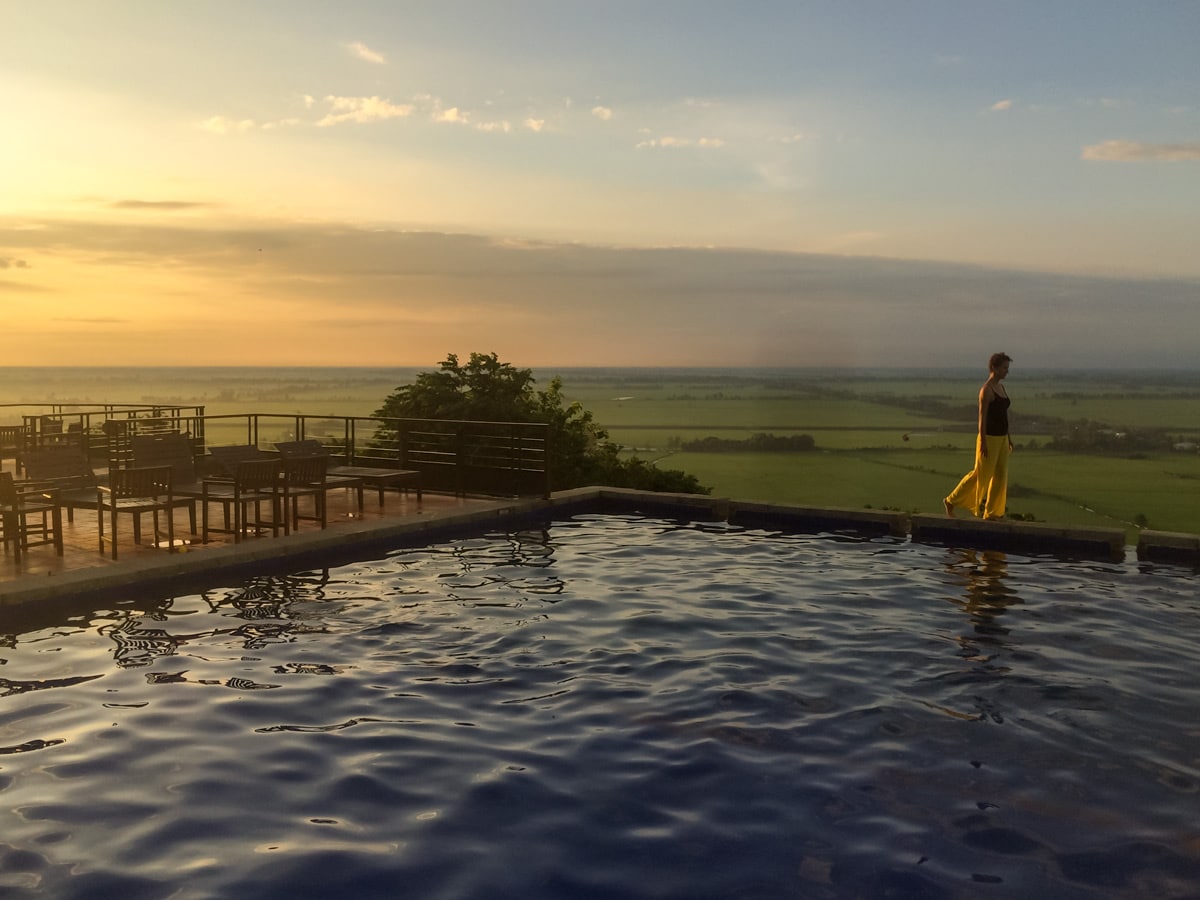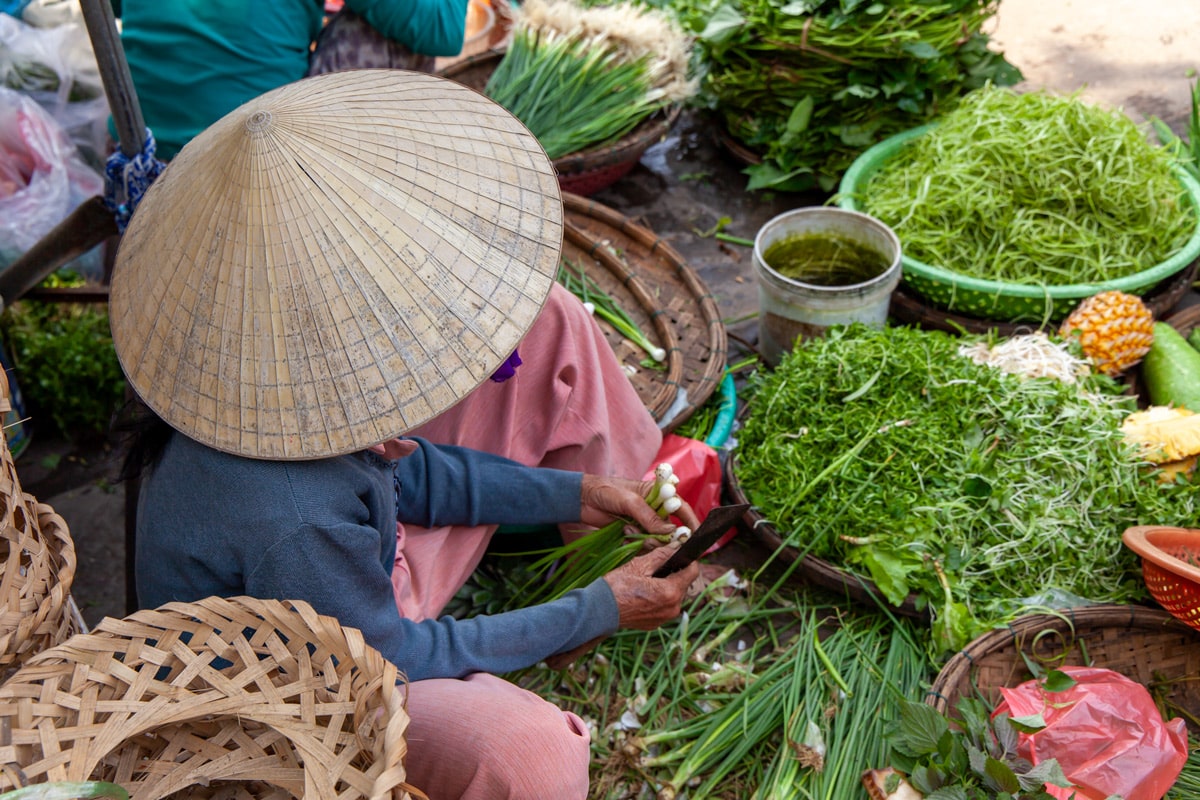My first impression of Vietnam was chaos. Arriving after spending time in Raja Ampat, possibly the most paradise-like remote place I’ve ever been, I dived straight into the non-stop buzz of Ho Chi Minh City before travelling up the country, and it was overwhelming. On my next visit, I glided into Vietnam from Cambodia by river, and it was one of the most peaceful days of my life.
All of this is to say Vietnam is everything in one: chaotic, calm, unapologetically green, and kaleidoscopic. To fall in love with the country, you must experience it all. From the lush rice paddies and floating villages to the disorientating cities where scooters scream and food markets rule supreme, Vietnam is one of Asia’s most diverse and best destinations. Here are some quick pointers to start planning your trip.


Pre-trip Vietnam planning tips
Vietnam is vastly easier to get around and get visas for these days than my first trip. However, a few crucial should be considered when planning your trip.
When to go
Vietnam is long. Arching from the Gulf of Thailand to China – bordering Laos and Cambodia en route – the country’s climate is considerably different between the south and north. March and April are the most rounded months to visit and tour Vietnam, when all three distinct regions should be dry and without extremes.
The north can be extremely cold in winter, while the summer is humid with showers. Meanwhile, the monsoon season in the country’s centre is from September to January, and the south sees the most rain between June and November. Tet, Vietnamese New Year, is one of the country’s most significant celebrations, scheduled sometime between late January and mid-February.
Getting organised
First, check if you need a visa. Some countries, including the United Kingdom, now have a visa waiver for stays of up to 45 days. However, if you want to stay up to 90 days, as is common for backpackers keen to experience the country fully, or are travelling from the USA, Australia or Canada, you’ll need to apply for an e-visa online. It’s better than it used to be, but the official government application portal is still clunky and cumbersome. Many agencies offer a more convenient and simplified Vietnam e-visa service that manually checks the paperwork before submission; for me, it’s been worth the slight extra cost every time.
Secondly, really think about where you want to go and how you want to get around. Vietnam is a vast country with too much to experience in one vacation, especially due to seasonal and regional weather variations. Packing for various climates is a given. You’ll want to assess the different forms of getting around and be sure to book any important activities well in advance if you have a particular preference. You’ll nearly always find a place to stay or a tour operator at the last minute, but as I’ve discovered more than once, it might not be exactly the experience you’d hoped for.


Getting there
Vietnam is very well connected by air to most other Asian countries and major European airport hubs. There are also direct flights to Australia and the USA. If you plan to focus on just the north, Hanoi’s Noi Bai International Airport (nicer but usually more expensive flights) is your best bet; for the south, Ho Chi Minh City’s Tan Son Nhat International Airport, usually with the country’s best-priced fares. Da Nang is the primary but lesser-served long-haul gateway for the central region. It’s common to fly into one and out the other, especially if your itinerary takes you across the entire country.
It’s also possible to enter Vietnam via land borders from China (including by train), Laos, or Cambodia. However, you’ll want to check your visa allows for entry via your preferred point; not all frontier checkpoints are open to foreigners. If you’re coming from Cambodia, one of the most serene, if slow, ways to arrive is by boat from Phnom Penh to Chau Doc. While the journey was a little monotonous, I’m so glad I did it once, as it gave me a whole new appreciation for South Vietnam.
Getting around
Vietnam has been on the backpacker route for decades, and hiring a scooter or motorcycle (be sure you have your correct documents, including an International Driving Permit) to traverse the country has long been popular. Domestic flights are frequent and affordable and are generally the preferred way to travel from Hanoi to Ho Chi Minh City. Consider taking the train to get around, which certainly isn’t as fast but can be rather scenic; some luxury trains provide more upscale trips or extender tours by rail.
In the big cities, especially HCMC, traffic is chaotic. I’d recommend forgetting the car, renting a scooter if you’re confident, or just enjoying walking and braving the passenger crossing. That said, Hanoi has a decent metro system, and HCMC opened its first metro line in December 2024.


Three of Vietnam’s top cities to visit
Vietnam’s cities are vibrant, vivid, loud and addictive, with the most popular to visit all providing a vastly different experience. If you’re staying longer, I recommend adding at least Imperial Hue and dazzling Da Lat to this list. However, on a first trip, the trio of “H cities” are considered the must-visits and main urban stopping points on any north-to-south (or vice versa) itinerary.
Hanoi
Hanoi, the country’s capital – but not the most populated city – is perhaps the best city to start exploring Vietnam, allowing for a journey from north to south while easing in with a slightly less hectic intro than Ho Chi Minh City.
Given the history of Hanoi and the 19th-century French invasion, the city blends European architecture (such as the Opera House, Cathedral and many old quarter houses) with temples and cultural sights. Two of my must-visit suggestions are the beautiful Temple Of Literature and Hoan Kiem Lake, both for a more laid-back snapshot of daily life and to visit the Ngoc Son Temple on the lake. It might be tempting to head straight to Halong Bay, but linger for a little, and you’ll undoubtedly succumb to Hanoi’s charm.


Hoi An
Arguably, the country’s prettiest and most photogenic city, Hoi An, on the Central Vietnam coast, shouldn’t be missed. The Old Town is a delight, with very welcome pedestrianised streets decorated with glowing lanterns and tailoring shops – two of Hoi An’s signature staples. HStroll between all of the highlights, including fragrant markets, the typical Tan Ky Old House and the temple-topped Japanese Bridge, and you’ll soon fall in love.
Hire a bike to get out into the bright rice fields beyond and take a lantern-illuminated boat trip at dusk when the city is most magical. Stray a little further to visit My Son, an ancient sanctuary, or head to the beach for a lazy day. My tip? Spend at least three nights here for a change of pace.


Ho Chi Minh City
Vietnam’s most populous city, southern Ho Chi Minh City – formerly Saigon and commonly called HCMC – might not appeal to everyone. But there’s much to love once you’ve mastered stepping out into traffic and got used to the noise.
The food markets, day and night, serve some of the best street feed (see below) that you’ll ever taste. Architecture is diverse, from the neo-classical European-style post office and church to Buddhist temples and towering pagodas. There are also pockets of green, and HCMC’s parks are where you’ll see everyday life played out. Of course, the Vietnam War is an integral part of the city’s history. Visiting the Cu Chi Tunnels, an underground labyrinth with a museum dedicated to the topic, is typical for first-time visitors.


Three of Vietnam’s best experiences
Vietnam could fill months of adventure. Hence why so many backpackers apply for the extended 90-day visa. The following three comprise some of my most memorable moments, but if you’ve time to spare, take at least one food tour or, ideally, a cooking class, explore a couple more national parks, and spend some serene downtime amongst the rice fields of Mu Cang Chai.
Explore the caves of Phong Nha National Park
There are caves. Then, there are the caves of Phong Nha National Park. This mind-boggling and protected park is home to the world’s largest cave, the Son Doong Cave, and hidden away from sight are rivers you can kayak down, unforgettable adventure experiences, and even the chance to spend the night sleeping within. Above ground, the World Heritage Listed park is equally spectacular, with lush hikes, scintillating waterways and cinematic karst topography.


Meander along the Mekong Delta
The Mekong Delta is a vast wetland of rivers, swamps, communities, and boat trips south of Ho Chi Minh City. Some delta parts, such as Con Phung, are more touristy than others. If you have the time, go deep and find quiet spots. But, if you’re just stopping for a day between Chau Doc and HCMC, My Tho provides a decent and fairly straightforward gateway to get boat trips through the fern-clad waterways and a taster of life in the delta around Turtle Island.


Kayak around Halong Bay before sleeping on a Junk Boat
Many will call Halong Bay a tourist trap, and the experience can sometimes feel like a theme park. But, skip the day trip and make a night of it, and you’ll see northern Vietnam’s UNESCO-listed tourism superstar in a whole new light.
Sure, take a brief boat trip around the thousands of karst islets that spear through the gemstone waters if you’re short on time, but if not, get out and explore by kayak instead. I promise it’s a much more intimate experience, especially if you spend some time getting to know the floating villages better. Then, overnight on a traditional wooden junk boat, you can experience the rock formations, tranquil waters, and atmosphere of this ethereal place with far more serenity under a starlit sky and at sunrise.


Three Vietnam destinations worth a detour
Unapologetically green landscapes that are ripe for roaming, idyllic islands perfect for a pause, and floating villages and waterways beyond the more obvious Mekong Delta form this trio of detours worth considering if time allows.
Con Dao Archipelago
Vietnam’s mainland is dominated by non-stop cities and soul-nourishing national parks. But if you’ve got an island itch, venture to the Con Dao Archipelago for a change of pace. Home to some of the best beaches in the county, the island group offers a choice between true boltholes or coastal city-like experiences. Bay Canh is often touted as the best island to visit, but you have over a dozen to choose from.


Chau Doc
Head south beyond the Mekong Delta and eventually you’ll reach Chau Doc. I adore this corner of the country. The city feels notably less tourist-orientated, especially the waterways, floating villages and fish farms. Just be mindful this is a community home and remain respectful. Surrounding it all are vivid rice fields, laid-back hotels and community temples providing a refreshing retreat from HCMC.
Sapa
A detour from Hanoi, Sapa is one of the best hiking destinations in Vietnam. Rugged mountains, terraced rice fields, and remote villages with unique cultures and Indigenous communities make this one of the best rural escapes in the country


A trio of Vietnam’s most memorable stays
Overwater bungalows, hill-crowning retreats, treehouses in rice paddies and overnight stays on luxury sleeper trains or traditional boats all add to the Vietnam experience and often, without some of the eye-watering price tags found elsewhere. Here are three of Vietnam’s most unique spots to sleep.
LUXNAM, Phu Quoc
Slip away to Phu Quoc, an island closer to Cambodia than Vietnam, and you’ll have all the turquoise waters, silky sands and palm-backed photoshoots you could dream of. Plus, for a little taste of the Maldives in the Gulf of Thailand, from 2025, you’ll be able to sleep in an overwater bungalow at LUXNAM, where the string of cyan-water-stilted luxury cabins will become Vietnam’s first overwater accommodation.


Victoria Nui Sam Lodge, Chau Doc
My favourite hotel in Vietnam, Victoria Nui Sam Lodge, isn’t particularly flashy, expensive or luxurious. However, the tiered accomodation’s splendid location – surveying lush rice paddies from atop a rock – gives this low-key, yet splendid stay its charm. Watching the sunset from high above perched on a rock, taking a morning dip distracted by the panoramas, and enjoying a candlelit dinner on the tower-like terrace all make this a sleepy, splendid two-night stop.
Camping in Hang En Cave
Ever camped in a cave? How about the world’s third biggest? Well, perhaps it’s time to give it a go at Hang En Cave in Phong Nha Ke Bang National Park. Sleeping here is an incredible experience, and not just because of the size. Sunlight streams in through the cave’s mouth, illuminating the sand and river-fed pool inside. You’ll need to trek in, but it’s worth it once you set up the tent.


Don’t leave Vietnam without trying these delicious dishes
Lemongrass, mint, coriander, bird’s eye chillies, and lime… the Vietnamese have more than mastered the art of balancing fragrant flavours. The nation’s menu is extensive and immaculate, but if you’re looking for the headliners, these three tasty treats tick all the boxes.
Pho
The most fabled of all Vietnamese soups, Pho is a simple, steaming and flavour-stacked delight. Given its fame, it’s surprising to learn it isn’t a particular old-school dish. But while the two main types of Pho (it differs from north to south), both with noodles, beef, bean sprouts and basil swimming in a cilantro, ginger, and bone broth, might lack history, they certainly compensate with flavour.


Goi Cuon
Forget spring rolls (known as Nem in Vietnam); it’s all about summer rolls here. Goi Cuon are scrumptious, tube-like, wrapped treats similar to spring rolls but far more fresh, light and fragrant. Using rice paper to bundle together herbs, green veggies, and sometimes prawn or pork – the dipping sauces are just as important – is sometimes a delicious DIY feast. Whether you assemble them or they come ready, you won’t be disappointed.
Banh Mi
Far more than a simple sandwich, Vietnam’s Banh Mi is a staple, go-to, on-the-go food that packs an explosion of flavour into a portable, bread-wrapped beast. Using shorter, baguette-like bread that was adapted from French-style baking, the sandwich is stuffed with pate, sliced meat, vegetables, pickles and a generous splash of soy or another sauce. You’ll see them everywhere, and on a busy day of sightseeing, they hit the spot if you don’t want to spare time for snacking.







